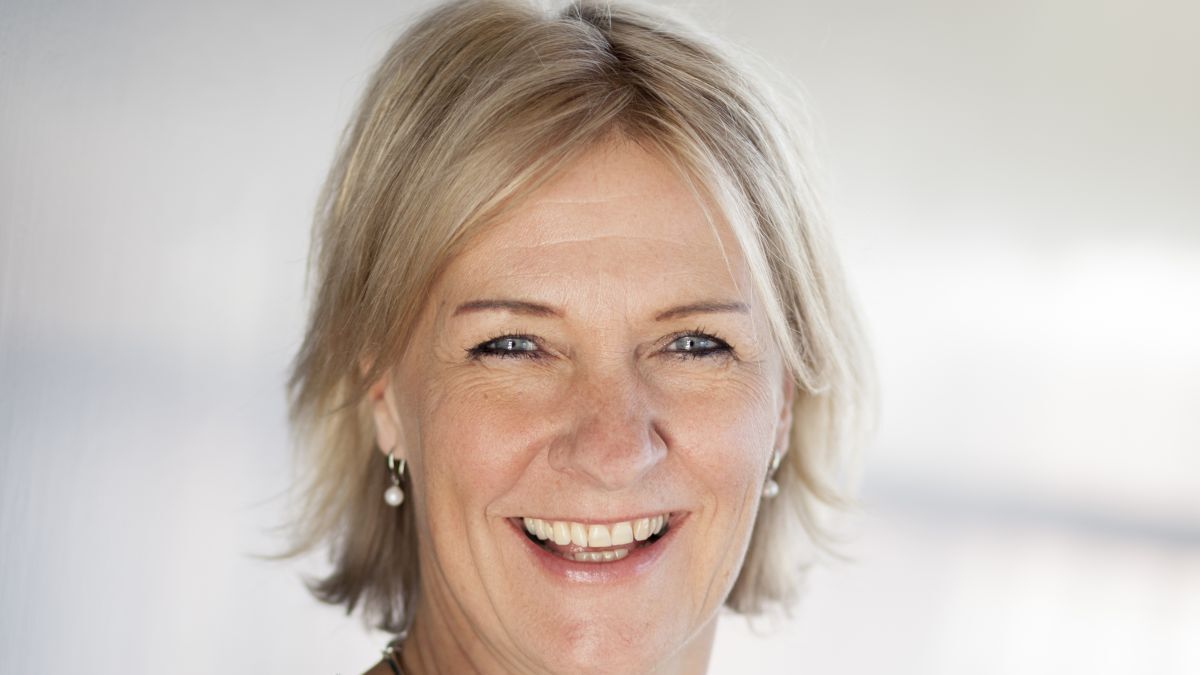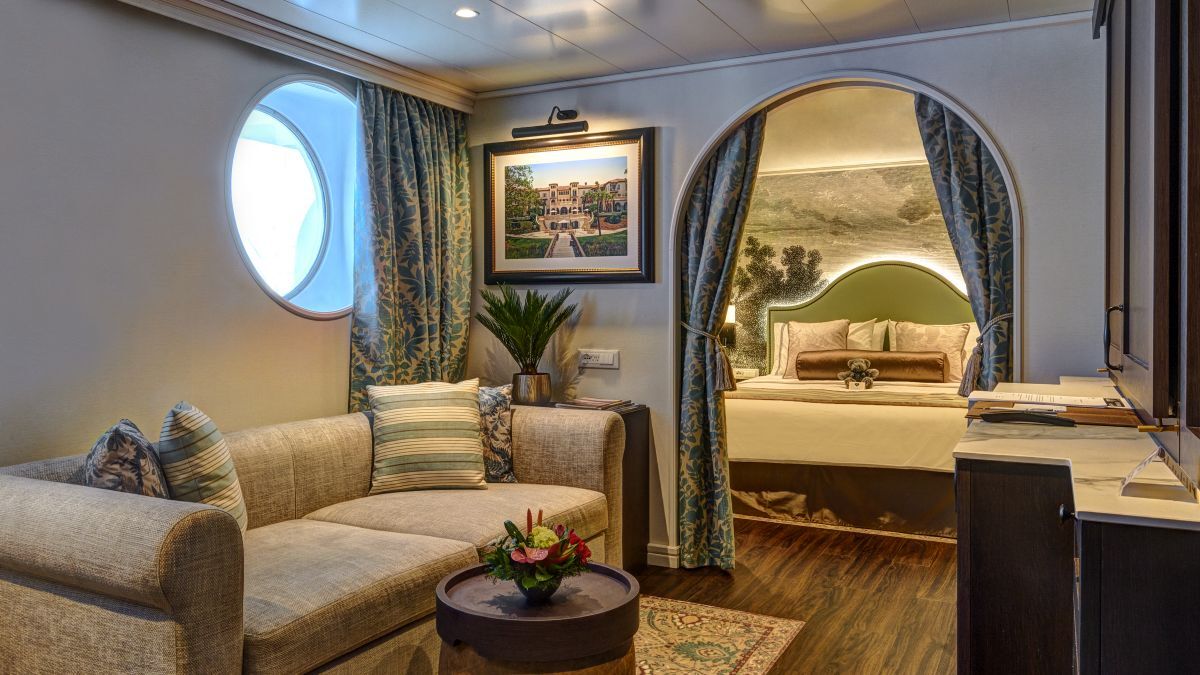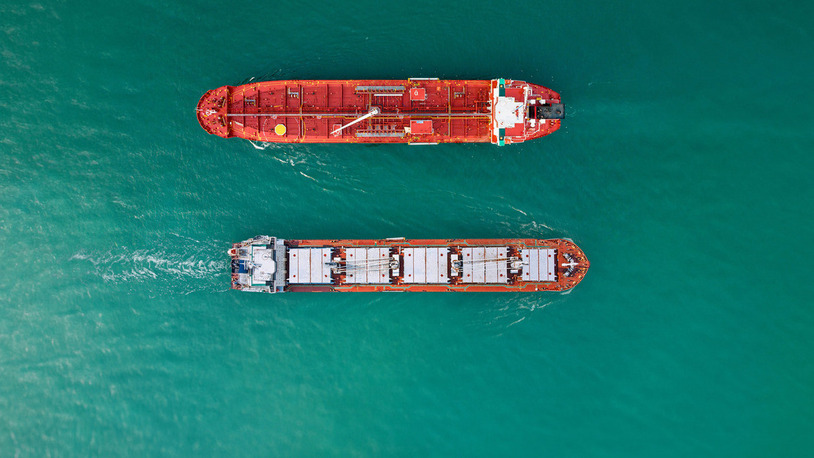Business Sectors
Contents

How shipyard handled complex MSC scrubber refit
The scrubber refit for an MSC Cruises ship was Chantier Naval de Marseille’s largest project in 2018
The scrubber refit for an MSC Cruises ship was Chantier Naval de Marseille’s largest project in 2018 – and it has another to carry out this year. The yard explains the main considerations and challenges
Chantier Naval de Marseille (CNM) has seen an increased demand for repair and refurbishment works focused on greener and more fuel-efficient operations – and this is an area it is keen to develop further.
The shipyard and its sister yard, Marseille-based San Giorgio del Porto (SGdP) complement each other when it comes to cruise and ferry refit and conversion work.
The sister shipyards call themselves a ‘one-stop-solution’ for repair, conversion and refitting operations in the shipping industry, providing services not only to passenger ships but also to offshore vessels and LNG carriers. While they are independent companies, they work together and complement each other.
The shipyards’ commercial manager Manolo Cavaliere says a major trend within the cruise market is installing scrubbers – and he singled out the MSC Cruises scrubber refits for MSC Poesica and MSC Orchestra carried out at the yard last year as being particularly significant for the yard.
Four ships from MSC Cruises have undergone or will undergo scrubber refits in 2018 and 2019. The other vessels are MSC Splendida and MSC Musica. All four had been scheduled to have this work completed at scheduled drydocks, with CNM to carry out work on MSC Musica in October this year. The hybrid scrubbers were supplied by LAB, part of the CNIM Group of companies.
MSC Cruises is using a range of solutions across its fleet to meet the upcoming 2020 low sulphur cap. At a passenger ship conference at SMM in September 2018, MSC Group executive vice president, maritime policy and government affairs, Bud Darr highlighted the importance of operators using a variety of ways within their fleet to meet the regulation.
He illustrated how the MSC fleet was using different ways to meet these regulations, with five ships that “may or may not be fitted with a scrubber”, a series of ships that will be fitted with one and five ships on order to be fuelled by LNG. He explained that it is important to look at the problem holistically and find the right solution for the right ships and right itineraries.
Mr Cavaliere says of the MSC Poesica and MSC Orchestra scrubber installations “This is the largest project we carried out last year. It was a complex project involving a large vessel and we needed a large number of people.”
He singles out the challenge of a 21-day timescale. “Therefore, engineering co-ordination and the planning of all parties was necessary for success. We installed three scrubbers, and several modifications were needed in the ship to allow them to be installed, including new pipelines and equipment.”
The shipyard carried out all the piping, manoeuvring and installation. The scrubbers were installed in the funnel, and the silencers were removed, with the scrubbers fitted into the extra space this created.
Mr Cavaliere explains “The project was quite complicated and started at the hull. We had to modify inside the funnel, so a mix of engineering was needed to find space for installing the pipes. It was not easy to find space, we moved out the silencers and installed scrubbers there.
“The risk is to have a lot of people working in same area, it is a step-by-step installation that is very complicated.” The shipyard dealt with the challenges by planning well in advance, at least several months before the drydock took place.
“The most challenging part was to complete work on the funnel and hull, this was the critical aspect,” says Mr Cavaliere.
The shipyard has carried out several scrubber installations for passenger ships, including one on a ferry last year where the funnel had to be made higher to fit the scrubber in.
The shipyard is keen to carry on working on large retrofit projects. Mr Cavaliere says “A key factor for the big conversion and refurbishment projects we are undertaking is that we have installed a new crane in our bigger dock able to reach height and capacity and we are installing another for the smaller dock. We have installed this equipment to be ready for the big projects being planned now and are creating a very good team of engineers – we are hiring skilled people to increase our capacity.”
When refitting two or three ships concurrently, he said that to manage activity on different vessels, it was crucial to receive the documents and specifications from the owner well in advance.
Since the start of 2018, CNM carried out four cruise ship drydocks on Norwegian Cruise Line’s Norwegian Star, Costa Cruises’ Costa Victoria, and AIDA Cruises’ AIDAbella and AIDAaura.
Over on the ferry side, drydocks have been completed on Corsica Linea’s Pascal Paoli, Vizzavona and Jean Nicoli ships, and GNV’s Majestic and Excelsior ferries.
SGdP completed several projects for GNV, Fantastic and Superba, and Algerie Ferries, El Djazair II and Tariq Ibn Ziyad.
CNM has one cruise ship refit confirmed at the beginning of 2020, with three more booked in between 2021 and 2023. It is also in discussions about other projects.
While the upcoming and current retrofit work includes regular scheduled work as well as hotel revamps, Mr Cavaliere highlighted the drive to make vessels more environmentally friendly and energy efficient through refits. “Recent projects have involved retrofitting systems on board to reduce the electrical consumption of vessels and adding shorepower connections to allow vessels to use electricity when at harbour.”
Due to its focus on refitting vessels to make them more fuel efficient, CNM has launched an automated system that can be used for both spot repair and treating complete hulls, developed by Hubert Palfinger Technologies. With its dual-system setup, the hull treatment carrier can simultaneously blast and coat the hull.
It is now available at CNM for all repair and refit projects and is the first automated system for maintaining ship surfaces.
The robot is capable of cleaning and spraying a hull in a fraction of the time of the manual process and it is much safer for the operatives. It will also save owners money.
“The paint saving is between 20% and 30%,” says Mr Cavaliere.
The shipyard’s location in Marseille brings strong benefits to owners deciding to use it for refurbishment and refit projects. Mr Cavaliere said “We are close to Barcelona, a key cruise port. Ships can save days of navigation if they decide to come to us.”
Mr Cavaliere singled out the yards’ 90-year history plus the wide range of facilities, including a drydock 465 m long by 85 m wide, as being important reasons why even the most complex projects can be carried out and any type of vessel can be handled.
He sums up “We are investing in activities and believe we can grow in the near future. We have the facilities, the people and the right know-how and flexibility for complex and big projects.”

Snapshot CV: Manolo Cavaliere (CNM)
Manolo Cavaliere has been the commercial manager for Chantier Naval de Marseille and San Giorgio del Porto since June 2013. Previous to this role he was project manager at San Giorgio del Porto, where work included project managing the Costa Neoromantica refit. Other roles include being site manager for Seabourne newbuildings in Mariotti yard in Italy between 2008 and 2010.
Related to this Story
IMO’s net-zero plan poised to pressure ageing fleet with rising costs
Events
Reefer container market outlook: Trade disruption, demand shifts & the role of technology
Asia Maritime & Offshore Webinar Week 2025
Marine Lubricants Webinar Week 2025
CO2 Shipping & Terminals Conference 2025
© 2024 Riviera Maritime Media Ltd.













